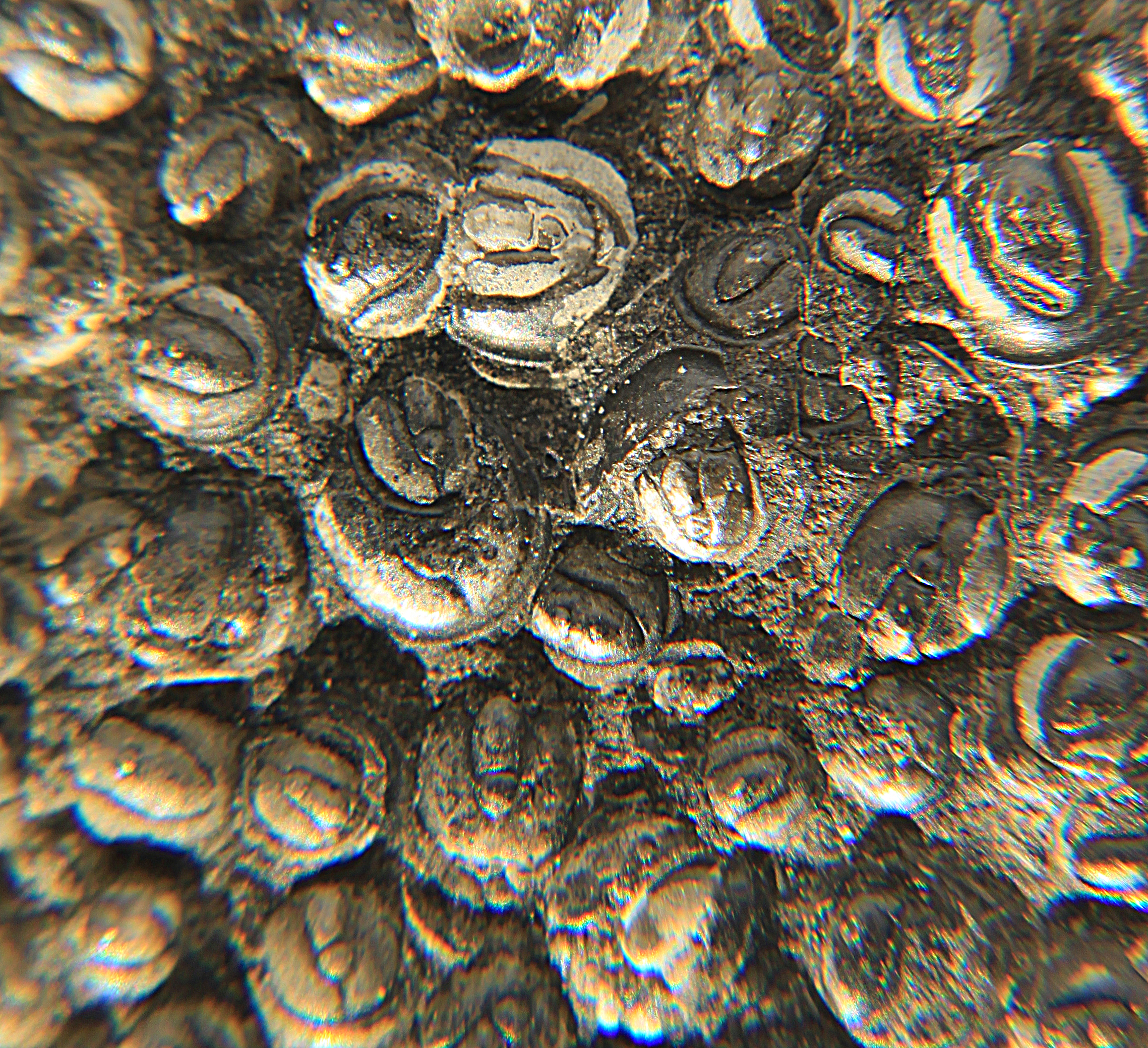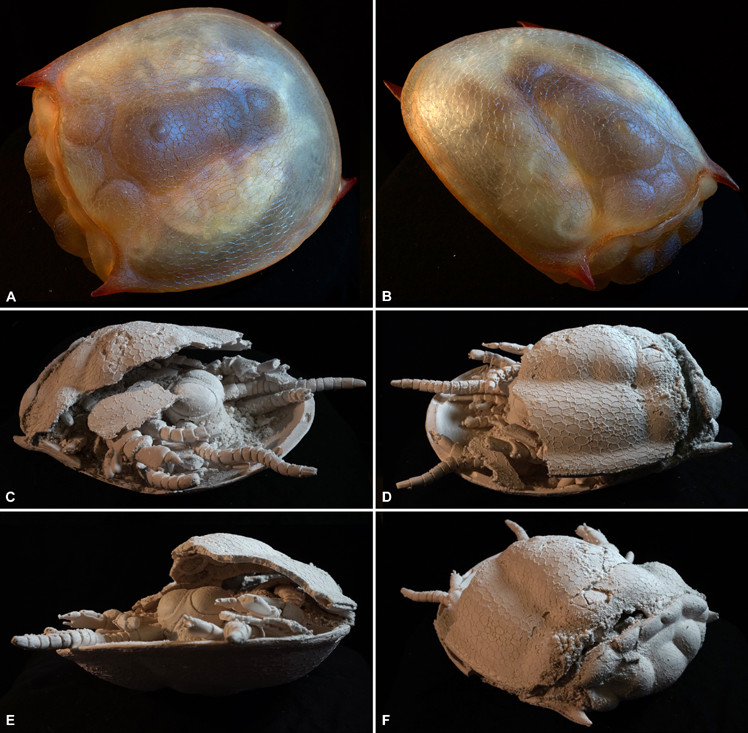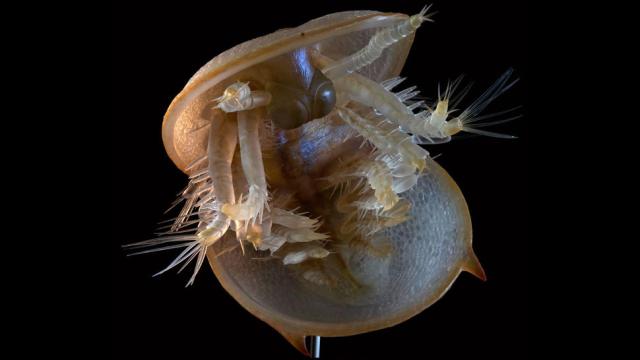Well, maybe it’s a face that only a mother could love, but this remarkable recreation of a prolific sea creature that lived over 500 million years ago is offering an entirely new perspective of a particularly well-known species.
Image: Esben Horn
It’s called Agnostus pisiformis, and it lived between 506 to 492 million years ago, ending its brief but successful reign during the early stages of the Upper Cambrian period. These trilobite-like arthropods lived in huge numbers, leaving an abundance of fossilized traces in England, Scandinavia and Russia.
In a new study published in Earth Science Reviews, Swedish paleontologist and geologist Mats E. Eriksson pooled together virtually everything he could find about Agnostus pisiformis, creating the most thorough review of this Cambrian creature to date.
Not content to stop there, he hired an artist to create three highly accurate 3D sculptures of the creature, which Erikkson is now using to showcase this “beautiful fossil animal”.
“Beauty is in the eye of the beholder of course, but to me it is beautiful for a number of reasons,” Erikkson told Gizmodo. “I love its anatomy, but I guess it becomes even more beautiful in my eyes because of its long and convoluted research history, and its applicability. Finally, being known from exceptionally [well] preserved material we have detailed insights into its anatomy… What is there not to love?”
Scientists have known about Agnostus pisiformis for centuries. It was first introduced to the literature in 1729 by Swedish scientist Magnus von Bromell, who described its weird appendages as “small beetle-like worms.”

Fossilized remains of Agnostus pisiformis. (Image: Wikimedia)
Indeed, since the time of von Bromell, scientists have been able to not just model its outer two shells, which give it a clam-like appearance, but also its soft interior tissue — again, the result of having so many fossils to work with. This is what made it possible for Esben Horn, a Danish artist and designer, to create the extremely detailed sculptures. An adult A. pisiformis only measured about a centimetre across, but Horn’s sculpture magnified it in size.
“The sculptures have been greatly scaled up and show the animal’s complete anatomy down to the smallest detail, including all the extremities and antennae,” said Erikkson, a professor at Lund University, in a statement. “The incredible degree of preservational detail means that we can grasp the entire anatomy of the animal, which in turn reveals a lot about its ecology and mode of life.”
He says the new models “breathe life” into this important fossil species. Using clay, silicone, and translucent polyurethane resin, Horn produced three sculptures, including one with the animal in a closed-in protective mode, one showing it in swimming mode, and one demonstrating what the fossil looks like when viewed with an electron scanning microscope.

Image: Erikkson and Horn (used with permission).
Along with these new models, Erikkson’s new paper presents an exhaustive review of the species, including an account of its research history, distribution (both in time and geography), anatomy, physical development, possible behaviours, and “biostratigraphic utility.” On that last point, Erikkson says A. pisiformis is particularly useful as a fossil and that’s because it wasn’t around for very long.
Scientists are subsequently able to use the fossil to date various rocks and stratigraphic layers, which explains why it’s such a hit amongst geologists. It’s often found in both shale and limestone nodules, where it’s excellently preserved.
But A. pisiformis is also providing insights into what ancient life was like during this early time in Earth’s history. The abundance of fossils means that scientists can study this animal from its earliest juvenile phases up to an adult.
Erikkson is hoping to take his sculptures on the road, showcasing them at various travelling exhibitions. Ultimately, he wants to show people that there’s more to paleontology than dinosaurs.
